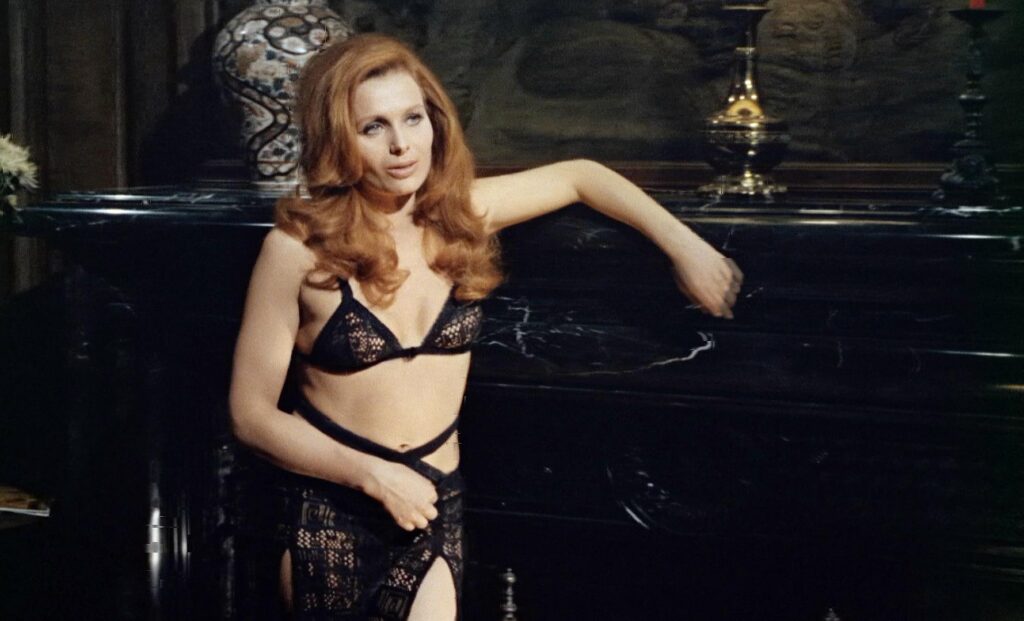
The Devil’s Nightmare (1971) is an underrated French modern Gothic horror film. The interjection of exploitation tropes, such as the soft-core sex scenes between women, into the film throws the first half a little off balance but it doesn’t interfere with the Gothic atmosphere provided by the castle location. Unlike similar exploitation films with prestige pretensions The Devil’s Nightmare actually attempts to develop characters which helps make what could easily have been a pot boiler a shade more compelling.
The first half of The Devil’s Nightmare seems to polarize audiences. Before watching the film for myself I read a number of user reviews on Letterboxd that complained that the first half was too slow. It is in this half of the film that the characters, the family curse, and the legend of the succubus are all established and developed which makes a slower pace to the narrative a natural aesthetic choice. Director Jean Brismée accomplishes this well enough but adds another layer to the mix. Jean Brismée gets just a little more camp out of his performers so that the trope of weary travelers arriving at a cursed castle during a rain storm is rendered with tongue firmly in cheek. How certain viewers miss this I don’t quite understand because it isn’t an all that subtle choice on Brismée’s part.
The second half of The Devil’s Nightmare, which is clearly Erika Blanc’s film, is something all viewers definitely agree is effective. In this portion of the film Blanc portrays a succubus who goes about executing each of the travelers in a manner that reflects which ever of the seven deadly sins they are guilty of, with the exception of the seminarian Alvin Sorelle (Jacques Monseau) who lives to make a pact with the devil (Daniel Emilfork) and set up the films twist ending. Brismée gets pretty creative in the staging of these fetish murders and seems to delight in this process of invention.
Erika Blanc really does dominate the last forty-five minutes of the film. She’s terrifically menacing while also evoking a strong sex appeal in her skimpy one-piece outfit. This balance of terror and allure doesn’t really come off in most films of this ilk but Blanc and Brismée manage it quite well. Often an exploitation film will lean more on the side of sex appeal, throwing all of the terror and scares necessary to the plot out the window. The Devil’s Nightmare is a really solid horror flick from the early seventies that clearly connects the dots, in terms of aesthetic development within the horror genre, between the Hammer films of the sixties and the Euro-sleaze horror films that defined the seventies.
